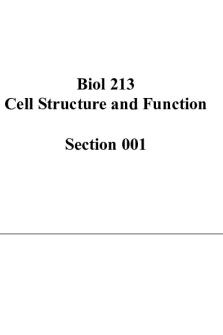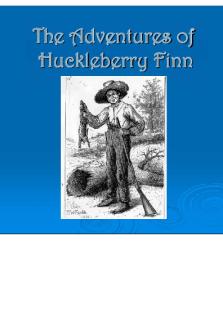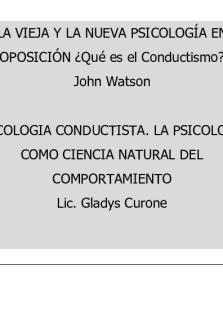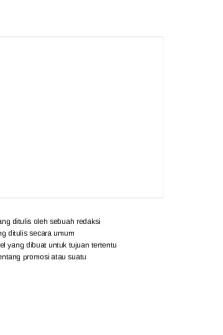Apush-Chapter 15Lectureand Power Point Outlinecompleted PDF

| Title | Apush-Chapter 15Lectureand Power Point Outlinecompleted |
|---|---|
| Course | Embodying Gender: Public Health, Biology and the Body Politic |
| Institution | Harvard University |
| Pages | 9 |
| File Size | 183.7 KB |
| File Type | |
| Total Downloads | 107 |
| Total Views | 146 |
Summary
lllllllllllllllooooooooooooooolllllll...
Description
APUSH: Chapter 15 – Reconstruction and the New South Lecture/Power Point Outline: The Problems of Peacemaking: In 1865 it became clear the war was almost over No plan existed for what would happen to the south Lincoln couldn’t negotiate w/the Confederacy Couldn’t simply readmit the South as if nothing had happened Reconstruction:
Human toll of the war → north lost 364,000 soldiers, south lost 260,000 soldiers Between 1865-1877 the federal govt carries out a program to repair the damage to the South and restore the Southern states to the Union → this program was known as Reconstruction Freedman = freed slaves → starting new lives in a poor region w/slow econ activity Plantation owners lost slave labor valued at $3 billion dollars Poor white southerners could not find work because of new job competition from freedmen War had destroyed 2/3’s of the south’s shipping industry and 9,000 miles of railway
The Aftermath of War and Emancipation: The south was devastated Towns and fields ruined Many whites stripped of slaves and capital Labor shortages 20% of male pop died Myth of the Lost Cause:
Ritualized mourning Southerners began to romanticize the “Lost Cause” Nostalgia for the antebellum South Treated Confederate heroes as religious figures Monuments and statues
Emancipation:
Four million emancipated slaves Hundreds of thousands left the plantations Wandered searching for work Almost none owned land or property Uncertainty for blacks and whites
Competing Notions of Freedom: For blacks freedom meant → end to slavery, rights and protections to live as free people Some blacks wanted land and others wanted simply legal equality For whites freedom meant noninterference from the North
13th Amendment:
Ratified in Dec. 1865 Outlaws slavery in the United States Gives Congress power to enforce this through legislation
Freedmen’s Bureau:
1865 the Congress creates the Freedmen’s Bureau → help former slaves get a new start in life → first major relief agency in U.S. history Built schools to educate blacks → former slaves rushed to get education for themselves and their children Education was difficult and dangerous to get → Southerners hated the ideas of educating blacks Bureau of Refugees, Freedmen, and Abandoned Lands Many northern abolitionists risk their lives to help southern freedmen White Southern Democrats called these Northern whites → “carpetbaggers”
Freedmen’s Bureau:
Led by General Oliver Howard Successes → provided food, clothing, medical care, education Organized blacks to vote Failures → only authorized for one year and too small
Issues of Reconstruction:
Social realities Ideals Partisan politics Readmitting the South would reunite the Democrats and weaken the Republicans Punish the South? Redeem the South? Conservative v. Radical Republicans
Plans for Reconstruction:
Wartime Reconstruction → Lincoln’s 10% Plan Proclamation of Amnesty and Reconstruction Dec. 1863 Replace majority rule with “loyal rule” in the South He didn’t consult Congress on Reconstruction Pardon to all but the most high ranking civilian and military Confederate officers When 10% of the voting population in the 1860 election had taken an oath of loyalty and established a govt, it would be recognized 1864 → “Lincoln Governments” formed in LA, TN, ARK → they were weak and dependent on the Northern army for their survival
Wade-Davis Bill 1864:
Required 50% of the number of 1860 voters to take an “iron clad” oath of allegiance → swearing they had never voluntarily aided the rebellion Required a state constitutional convention before the election of state officials Enacted specific safeguards of freedmen’s liberties
“Iron-clad” oath “State suicide” theory → MA Senator Charles Sumner “Conquered provinces” position → PA Congressman Thaddeus Stevens Lincoln exercises a pocket veto to kill the bill
The Death of Lincoln:
Lincoln goes to Ford’s Theater to watch the play Our American Cousin Assassinated by John Wilkes Booth “Sic Semper Tyrannus” Part of a larger conspiracy
Johnson and “Restoration”:
Lincoln’s vice president → Andrew Johnson → becomes president when Lincoln is assassinated Andrew Johnson → Jacksonian Democrat, anti-aristocrat, white supremacist Agreed with Lincoln that states had never legally left the Union
President Andrew Johnson:
Democrat who remained loyal to the Union Lincoln chose him as his VP to help w/the South’s Reconstruction Supported Lincoln’s plan Engaged in a power struggle w/Congress over who would lead the country through Reconstruction Would be impeached but not removed from office
Presidential Reconstruction:
Johnson’s plan to readmit the South was considered too gentle Amnesty → presidential pardon Rebels sign an oath of allegiance 10% of the pop → even high ranking Confederate officials Write new state constitutions → approve the 13th amendment, reject secession and states’ rights, submit to U.S. govt authority No mention of → education of freedmen, citizenship and voting rights
Competing Reconstruction Plans:
10% Plan → Lincoln 1863 Wade-Davis Bill → congress 1864 Andrew Johnson’s Plan 1865-1867 → presidential reconstruction “Congressional” or “Radical” Reconstruction 1867-1877
Growing Northern Alarm:
Many southern state constitutions fell short of the minimum requirements Johnson granted 13,500 special pardons Revival of southern defiance → Black Codes
Black Codes:
As southern states were restored to the Union under Johnson’s plan → they began to impose Black Codes → laws that restricted freedmen’s rights Curfews Vagrancy Laws Labor contracts Land restrictions → keep blacks in rural areas → provide labor Purpose → maintain stable labor supply now that blacks were emancipated/restore preemancipation system of race relations Many blacks were forced were forced to become “sharecroppers” → tenant farmers
Black Codes:
Similar to slave codes Restricted freedom of movement Limited the rights of blacks as free people
Johnson’s Vetoes:
Vetoes extension of the Freedmen’s Bureau Vetoes Civil Rights Bill Urges the South to reject the 14 amendment
Radical Reconstruction – Radical Republicans:
Wanted to see the South punished Advocated political, social, and economic equality for the freedmen Would go after President Johnson through the impeachment process after he vetoes the Civil Rights Act of 1866 Key leaders → Thaddeus Stevens and Charles Sumner
Reconstruction Amendments:
13th amendment → ended slavery 1865 14th amendment → granted citizenship to ex-slaves and gave all the rights under the Bill of Rights 15th amendment → guaranteed the right to vote African American men
The Congressional Plan → “Radical” Reconstruction:
Republicans, mostly radicals, sweep the election of 1866 Radicals pass three reconstruction bills → Reconstruction Act of 1867 Johnson vetoes and Congress overrides the veto The Act voided the state govts formed in the South under the Presidential plans Divides the South into five military districts States are required to grant black men the right to vote and ratify the 14th amendment
Reconstruction Acts of 1867:
Command of the Army Act Tenure of Office Act → president could not remove officials from office without the consent of the Senate → designed to protect radical members of Lincoln’s govt → constitutionality doubtful
Military Reconstruction Act
Impeachment Process:
Impeachment → bringing charges against the president House of Representatives holds hearings to see if crimes are committed → then votes on the charges → if a majority agree then charges are brought against the president President is put on trial in the Senate → Chief Justice acts as the judge and the Senate must vote 2/3’s guilty to remove the president from office
The Impeachment of the President:
Johnson removes Secretary of War Stanton in Feb. 1868 → violation of the Tenure of Office Act Johnson replaces Generals in the field who were sympathetic to the Radical Republicans The House votes to impeach him by a vote of 126-47 11 week trial in the Senate Johnson acquitted 35-19 → one vote shy of the 2/3’s needed
The South in Reconstruction:
White view of Reconstruction → state govts imposed on them by Congress White view → new govts are corrupt and incompetent White view → Recon. caused enormous debt White view → Recon. trampled on the rights of citizens Black view of Reconstruction → failure of national and state govts to go far enough to guarantee freedmen rights of citizenship Black view → slavery is replaced by a harsh new system of economic subordination
The Reconstruction Governments:
“scalawags” → southern white republicans “carpetbaggers” → white men from the north who served as Republican leaders in the South Freedmen → the most numerous Republicans in the South were black freemen
The Taste of Freedom:
Freedom of movement Freedom to own land Freedom to worship Freedom to learn
Education:
Greatest accomplishments of Reconstruction govts was in education for blacks and whites Initial reform came from outsiders Southern education became divided into segregated schools
Landownership and Tenancy:
Failure of land redistribution Sharecropping
Sharecropping:
Sharecroppers were ex-slaves and poor whites who stayed in the South and continued to farm Freedmen signed a work contract w/their ex-masters Picked cotton or whatever crops the landowner had Freedmen did not receive “forty acres and a mule” Sharecropping is a type of farming Landowner provided land, tools, animals, housing, and a charge account at the local store to purchase necessities Freedmen provided the labor Sharecropping is based on the “credit” system Vicious cycle of debt is created → in effect becomes economic slavery
The Crop-Lien System:
New system of credit Local country stores that farmers depended on for food, clothing, seed, and farm equipment Farmers purchase on credit at high interest rates → a lien or claim on the crops acts as collateral
The Grant Administration:
“Waving the bloody shirt” → using the Civil War to win elections In 1868 Grant narrowly defeats Horatio Seymour Grant is inexperienced Used the spoils system Supported Radical Reconstruction “Grantism”
The Election of 1872:
Rumors of corruption during Grant’s first term discredit the Republicans Horace Greeley runs as a Democrat/Liberal Republican candidate Greeley is attacked as a fool and crank Greeley died on November 28, 1872
The Grant Scandals:
Grant presided over a period of unprecedented growth and corruption Credit Mobilier Scandal Whiskey Ring The “Indian Ring”
Credit Mobilier:
Construction company which helped build the Union Pacific Railroad Fraudulent contracts To avoid investigations → stock in the company was given to key members of Congress Schuyler Colfax → Grant’s VP was caught in the scandal
“Era of Good Stealings”:
Widespread corruption even reaching the White House
Bribes/gifts The “Whiskey Ring” Secretary of War William Belknap → the “Indian Ring” Grant’s in-laws
Northern Support Wanes:
“Grantism” and corruption Panic of 1873 → four year depression Concern over westward expansion and the Indian Wars Key monetary issues → should the govt retire $432 million worth of “greenbacks”, should war bonds be paid back in specie or greenbacks
Republican Diplomacy:
Secretary of State William Seward negotiates offer from Russia to sell Alaska for $7.2 million Many called this “Seward’s Folly” or “Seward’s Icebox” → thought it was a mistake
The Abandonment of Reconstruction:
North grows increasingly preoccupied w/its own political and economic problems Interest in Reconstruction begins to fade White southerners begin to replace the Republican Reconstruction state govts with “redeemed” white Democrat govts
KKK:
Ku Klux Klan refers to a secret society or an inner circle Organized in 1867 in Polaski, Tenn. by Nathan Bedford Forrest Represented the ghosts of dead Confederate soldiers Disrupted Reconstruction as much as they could Opposed → Republicans, carpetbaggers, scalawags, and freedmen
The Ku Klux Klan – Spreading Terror:
Klan sought to eliminate the Republicans in the South by intimidating voters Wanted to keep African Americans as submissive laborers Planted burning crosses on the lawns of their victims → tortured, kidnapped, or murdered them Prosperous African Americans, carpetbaggers, and scalawags were their victims Federal response → congress passes the Enforcement Acts of 1870 → banned the use of terror, force, or bribery to prevent people from voting Other laws banned the KKK and used the military to protect voters and voting places President Grant uses these laws launch a war on terror against the Klan As Federal troops were w/drawn from the South → black suffrage all but ended
And They Say He Wants a Third Term:
Grant had wanted to run again in 1876 Republican leaders are shaken by recent Democrat successes, scandals associated with Grant, and his declining health Grant is passed over for Rutherford B. Hayes of Ohio Democrats pick Samuel Tilden, the reform governor of NY
The Tweed Ring in New York:
Tilden became famous challenging a corrupt party machine in NYC William Tweed → “Boss Tweed” → notorious head of the Tammany Hall political machine Spoils system, bribery, contracts, jobs, pay offs → all done to maintain political control and enrich party leaders
The Election of 1876:
Tilden did not receive enough electoral votes → disputed votes Special commission gives the votes to Hayes Hayes wins the election → Democrats refuse recognize Hayes as president Political crisis of 1877 → corrupt bargain II?
The Compromise of 1877:
The election of 1876 and the Compromise of 1877 are referred to as the Corrupt Bargain Democrats and Republicans work out a deal to recognize Hayes as President In return, President Hayes must end Reconstruction and pull the Union troops out of the South Once this happens → there is no protection for the freedmen → South goes back to its old ways Jim Crow laws kept blacks from voting and becoming equal citizens
The New South:
The Compromise of 1877 → Democrat Party becomes in effect the only party in the South Bourbon Rule/”Redeemers“ → South again under the control of a powerful conservative oligarchy
Industrialization and the “New South”:
Some southern leaders advocated industrialization and the creation of a "New South’ Henry Grady → leader of the New South idea → did not challenge white supremacy → but advocated thrift, industry, and progress Railroad development
African Americans and the New South:
Some African Americans were attracted to the New South idea Beginnings of a small black middle class → vision of progress and self-improvement Believed education was the key Booker T. Washington → major spokesman of African Americans in the South → founder of the Tuskegee Institute Focus on industrial education and adopt the standards of the white middle class “The Atlanta Compromise” → focus on economic advancement before social equality
The Birth of Jim Crow:
Jim Crow laws → laws at the local and state level which segregated whites from blacks → kept blacks as second class citizens and denied voting right Poll taxes Literacy test Grandfather clause
Plessy v. Ferguson:
Supreme Court decision which legalized segregation throughout the nation Homer Plessy sues over the Louisiana Separate Car Act → he refused to sit in the “colored” car “Separate but equal” → legal as long as public facilities were equal Problem was these facilities were never equal Allows for segregation to continue until the 1960’s
Lynchings:
1890’s dramatic increase in white violence against blacks An average of 187 lynchings per year in the 1890’s Prisoners were seized from jails and hanged without trial Use of terror and intimidation to control the black population In 1892 Ida B. Wells launched an international anti-lynching campaign with a series of articles Goal was a federal anti-lynching law...
Similar Free PDFs

Power Point Outline
- 1 Pages

Power Point tanya - MEDICINA
- 6 Pages

power point Ascaris lumbricoides
- 19 Pages

Power point chapter 1
- 71 Pages

Power Point 1 Introduction
- 1 Pages

Power point rematik wita
- 7 Pages

POWER POINT IKATAN KIMIA
- 27 Pages

MODUL MICROSOFT POWER POINT
- 14 Pages

Power point BULLYING
- 7 Pages

Prácticas Power Point
- 2 Pages

Microsoft Power Point E3
- 9 Pages

Huckleberry Finn Power Point
- 22 Pages

Conductismo. Power Point
- 15 Pages

Dispensa Power Point - Didasko
- 51 Pages
Popular Institutions
- Tinajero National High School - Annex
- Politeknik Caltex Riau
- Yokohama City University
- SGT University
- University of Al-Qadisiyah
- Divine Word College of Vigan
- Techniek College Rotterdam
- Universidade de Santiago
- Universiti Teknologi MARA Cawangan Johor Kampus Pasir Gudang
- Poltekkes Kemenkes Yogyakarta
- Baguio City National High School
- Colegio san marcos
- preparatoria uno
- Centro de Bachillerato Tecnológico Industrial y de Servicios No. 107
- Dalian Maritime University
- Quang Trung Secondary School
- Colegio Tecnológico en Informática
- Corporación Regional de Educación Superior
- Grupo CEDVA
- Dar Al Uloom University
- Centro de Estudios Preuniversitarios de la Universidad Nacional de Ingeniería
- 上智大学
- Aakash International School, Nuna Majara
- San Felipe Neri Catholic School
- Kang Chiao International School - New Taipei City
- Misamis Occidental National High School
- Institución Educativa Escuela Normal Juan Ladrilleros
- Kolehiyo ng Pantukan
- Batanes State College
- Instituto Continental
- Sekolah Menengah Kejuruan Kesehatan Kaltara (Tarakan)
- Colegio de La Inmaculada Concepcion - Cebu

